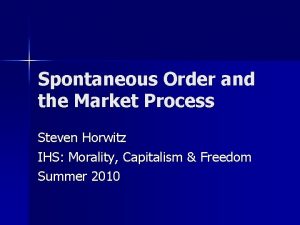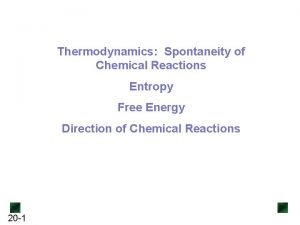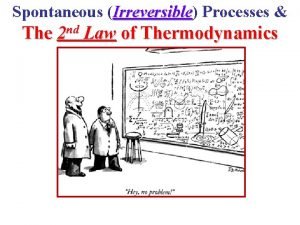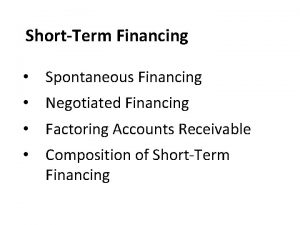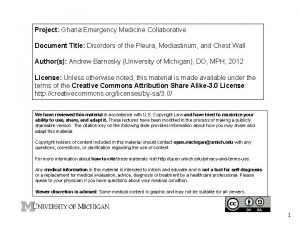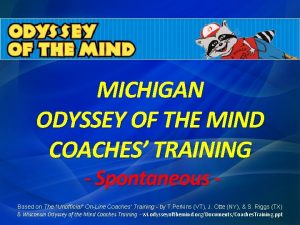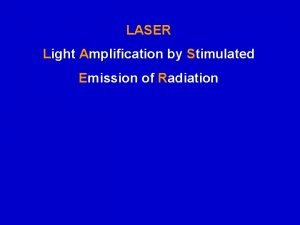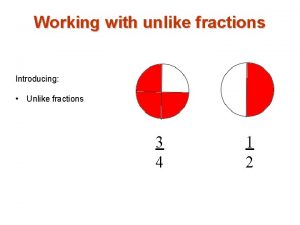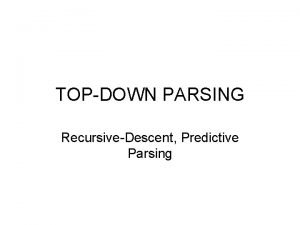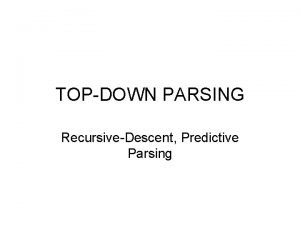I Spontaneous Order Theories Unlike power theories topdown











- Slides: 11

I. Spontaneous Order Theories Unlike power theories (top-down), these are bottom-up (predictability or coop emerges as by-product of individual actions). Hayek: All you need to know about Hayek comes from my lecture (you didn’t have to read the article). Hayek discusses two types of order (focusing on predictability). 1) Kosmos (spontaneous) Eg, market, society. Superior for efficiency, complexity. 2) Taxis (man-made). Eg, orgs, govt. Hayek against gov’t interference in market, but also argues norms required to make spontaneous order beneficial (ie, cooperative).

Axelrod I: How does cooperation emerge among self-interested individuals? Prisoner’s Dilemma: • Models situation in which individual incentives motivate action not in best interest of the group, all worse off than if cooperated (suboptimal equilibrium). – b/c defection always best individual strategy • Emergence of cooperation requires iterated games.

Axelrod-2: Live & let live strat. in trench warfare • Key point: spontaneous coop can develop even with opposing interests • Small immobile units = iterated PD game. • Lessons of this study for PD game: – Truce ↑ value of “mutual cooperation” – ↑ retaliation for violation.

Smith & Critiques • Adam Smith: Propensity to barter + desire for goods/$ Do. L increased productivity (↑ wealth) social order b/c rising tide lifts all boats. • Assumes positive-sum resources and rational egoism Critique of Spontaneous Order Theories • Polanyi (historical): laissez faire capitalism regulation • Unrealistic assumptions, esp. PD • What about social structure?

II. Groups & Networks Theories Simmel: Two types of social organization • Concentric – organic/“by birth” – Social order by reinforcing conformity – High social control Family Village Clan

Simmel, con’t • Juxtaposed – rational criteria; – Modern (heterogeneous) society – individuality, ÷s loyalty, group isolation

Gellner • Talks about why people join groups (need each other for safety & survival) • Anarchy cohesion/trust – No state & pastoralism formation of tribes for defense. • Also talks about ties across groups. Ritualized betrayal fluid/permeable associations. Prevents one getting too strong; groups self-police.

Tocqueville • Equality feared as source of conflict • In America, political freedom prevents conflict b/c voluntary assoc help people internalize coop values. • Thinks centralized gov’t makes men less self-sufficient, less bonded together

Hechter’s Theory of Group Solidarity • Assumes instrumental rationality: we join groups for net benefit, for goods we can’t produce efficiently ourselves • Solidarity varies w/ visibility (for social control) & dependence.

Hechter, Friedman & Kanazawa • Group Membership means benefits, but also obligations (on time, conformity to group norms, contributions, etc. ) • State “free-rides” on local social order, esp. that produced by deviant groups. • State will tolerate deviant groups unless they threaten state power, or organized grps.

Final Exam • 25 multiple choice questions worth 4 pts/ea • Exam focused on post-midterm material, but asks some questions comparing with earlier theories (Hobbes and Durkheim), and theory groups (e. g. , comparing group/network theories with theories from 1 st part of course). • 2 -4 questions per theorist. • Remember, take your time, cross off answers you know are incorrect, write yourself notes (diagram) for complicated/multi-part questions. • Bring scantron; will need to leave all personal possessions at front of room.

